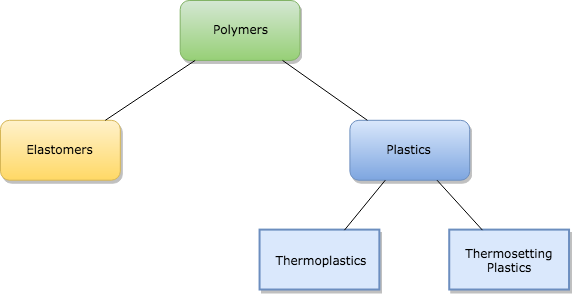

The word polymer literally means "many parts". Derived from the Greek words "polys" meaning many and "meros" meaning part, polymer is a term used to describe large molecules consisting of repeating structural units, or monomers, connected by covalent chemical bonds.
Two industrially important polymeric materials are plastics and elastomers. Plastics are a large varied group of synthetic materials which are processed by forming or molding into shape.

Plastics can be divided into two classes, thermoplastics, and thermosetting plastics, depending on how they are structurally and chemically bonded. Elastomers, or rubbers, can be elastically deformed by a large amount when a force is applied to them and can return to their original shape (or almost) when the force is released. (Taken from Principles of Materials Science & Engineering, William .F. Smith. McGraw Hill, Inc., New York)
Polymers can be found everywhere in our life. Some examples are modern telecommunications equipment, LCD (liquid crystal display) devices, ski boots, and luggage cases.
Clemson's School of Materials Science & Engineering offers undergraduates and graduate degree options in Polymer Fiber Chemistry (PFC) and Polymer Fiber Science (PFS).